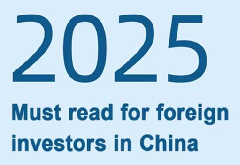Clinical Technical Requirements for Drugs Marketed Overseas but Not Marketed in China
I. Background
The marketing or imitation of overseas marketed drugs is an important means to solve the availability and accessibility of drugs in urgent clinical needs of patients in China. In order to speed up the research & development and marketing processes of the originator drugs and generic drugs marketed overseas but not marketed in China, according to the Provisions for Drug Registration (SAMR Order No.27) and supporting documents thereof, and in combination with the Technical Guidance for Accepting Overseas Clinical Trial Data ([2018] No.52), the technical requirements for clinical study and evaluation of such drugs have been formulated to provide technical reference for the industry, academia and regulatory authorities.
II. Scope of application
The Technical Requirements are applicable to the drugs marketed overseas but not marketed in China, mainly including two types of cases: (1) Originator chemicals and therapeutic biological products marketed overseas; (2) Generic chemicals at home and abroad.
III. General considerations
For drugs marketed overseas but not marketed in China, technical requirements for clinical trials to support its marketing in China should be established in compliance with the basic logic of clinical evaluation and on the basis of full evaluation of clinical demand of Chinese patients, clinical safety and effectiveness of overseas originator drugs, influences of racial factors as well as the need of benefit/risk evaluation in Chinese patients.
IV. Basic logic for clinical evaluation
(I) Clinical demand evaluation
The epidemiological status and severity of diseases and prognosis of the proposed indications in China as well as the existing treatment means and the limitations thereof should be analyzed, and advantages of the drug compared with existing domestic treatment means should be clarified, so as to make a judgment on the degree of clinical demand of Chinese patients.
For the drugs for the treatment of critical diseases and rare diseases for which there is no effective treatment means in clinical practice, regulatory authorities should take an encouraging attitude to conduct review and approval on the premise that the availability of drugs to the public is the first priority.
(II) Effectiveness and safety evaluation
First of all, scientific evaluation on the effectiveness and safety of drugs should be performed according to relevant Chinese technical requirements and based on the clinical study data of the originator drug. The evaluation steps are as follows:
1. Clarify the source of clinical data
It mainly includes two parts of data. One is clinical trial data used for registration, and the other is post-marketing clinical data. At the same time, the dynamic evaluation of the originator drug by foreign regulatory authorities should be concerned.
2. Evaluate the quality of overseas clinical trial data
The premise of scientific evaluation of clinical trial data is that clinical trials are carried out in accordance with the internationally accepted GCP and the clinical trial data shall be authentic, accurate, complete and traceable. The applicant can provide the drug evaluation authority with relevant documents or materials that prove the quality of clinical trial data for supporting marketing application. Verification results and conclusions of regulatory authorities of foreign countries with management practice can be taken as the references for quality evaluation of clinical trial data. China's drug regulatory authorities should conduct necessary verification of the clinical trial data for supporting marketing registration in China based on risks.
3. Understand the characteristics of biopharmaceutics and clinical pharmacology
In terms of biopharmaceutics, attention should be paid to the data of bioavailability/ bioequivalence (BA/BE) of dosage form, food influence and in vitro dissolution curve.
In terms of clinical pharmacology, attention should be paid to pharmacokinetics (PK), pharmacodynamics (PD), PK/PD correlation and drug interaction, providing basis for safe and effective clinical application. Possible racial differences in PK and/or PD between Chinese patient populations and foreign study populations should be evaluated by referencing ICH E5 and E17 guidelines, etc.
4. Evaluate the overall effectiveness and safety
Overseas clinical trial data and postmarketing data for registration should be systematically evaluated according to the current criteria for effectiveness and safety evaluation, so as to determine the overall effectiveness and safety of the investigational drug and assess whether the overall benefits outweigh the risks for patients.
(III) Racial sensitivity analysis
Racial sensitivity analysis should focus on possible influences from differences in PK and / or PD between Chinese patient population and foreign population on the safety and effectiveness. Such analysis should be performed on existing overseas clinical trial data to assess the racial sensitivity in accordance with the requirements in ICH E5 guidelines under the premise that it is firstly determined that the overall population benefits of the drug outweigh the risks. Racial sensitivity analysis involves the overall evaluation related to in vitro and human PK, PD, effectiveness and safety, judgment on whether there is any racial sensitivity difference in therapeutic response between Chinese patients and foreign population, and analysis on regulatory measures taken by foreign regulatory authorities according to the evaluation of clinical trial data. For those with sufficient studies on racial sensitivity conducted overseas, applicants should also consider the actual situation in China when submitting application for marketing or imitation. Disease and medical practice are two major factors that may affect the therapeutic response, so they should also be analyzed and judged together.
(IV) Decision-making based on benefit-risk assessment of Chinese patients
On the basis that the clinical study data of the originator drug is sufficient to support that the overall population benefits of the drug outweigh the risks, the evaluation decision should be made based on data analysis on the influence of racial factors in Chinese patients and foreign population. If the analysis data shows that the therapeutic response of Chinese patients is consistent with the results of overall population, the marketing of the drug can be supported. If there is any difference, it is necessary to evaluate whether the difference can affect the safety and effectiveness of medication for Chinese patients based on relevant study data. For those that have impact, it is necessary to further evaluate whether the applicant has conducted the specific study and taken necessary measures, including adjusting dosage and usage, adding contraindications, precautions and other contents related to racial factors, to support that the drug can be used in Chinese patients. After conducting specific study and taking necessary measures, if the benefits of the drug for Chinese patients outweigh the risks, its marketing can be supported.
V. Requirements for clinical trials
For the drugs marketed overseas but not marketed in China, full evaluation should be performed for the clinical study data of the originator drugs according to the basic logic of clinical evaluation and in combination with the actual situation of the drugs, and the clinical trial requirements should be determined according to the evaluation results. For drugs with different R & D backgrounds, the clinical trials required to be carried out should be determined case by case.
(I) Overseas originator drugs
It is encouraged to conduct synchronous clinical trials of overseas originator drugs in the early clinical R & D stage in China, for example, in the form of international multi-center clinical study, conducting synchronous human PK and PD, PK/PD, effectiveness and safety and other clinical trials in Chinese patients and foreign patients in the form of international multicenter clinical study and under the same clinical trial design and implementation conditions. These systematic clinical trials will help obtain direct evidences of the complete chain of evidences related to racial factors, help conduct comparative analysis on whether there is any difference and how big the difference is in the doseexposure-effect relationship, effectiveness and safety between Chinese patients and overall patients worldwide and how big the difference is on the basis of the overall population safety and effectiveness evaluation, and help conduct comprehensive evaluation when any difference is identified, to comprehensively weigh the clinical benefits/risks of the drug for Chinese patients, so as to support the marketing application. Study design should comply with recommendations of ICH guidelines (such as ICH E5 and ICH E17).
Different overseas applicants have different global clinical R & D strategies for originator drugs, resulting in differences in the contents and the degree of support of clinical trial data at the time of submitting application dossiers; therefore, the clinical trial requirements for overseas originator drugs should be determined according to the basic logic of clinical evaluation and based on the clinical needs of Chinese patients, study data of completed clinical trials and analysis results of the impact of racial factors.
The clinical trial requirements mainly include the following 3 conditions:
1. Safe, effective and racially insensitive
Where it is considered that a drug is safe, effective and racially insensitive upon evaluation, the exemption from clinical trials in China may be considered.
Where there have been PK, and/or PD, effectiveness and safety data of Chinese population in global data, and the analysis shows that the benefits of the drug used for Chinese patients outweigh the risks, data from relevant domestic and overseas clinical trials can be directly used to support the marketing application.
For drugs with no relevant data of Chinese population in the global data, but there is relatively sufficient racial factor related study and analysis data and no significant impact of racial factors is identified, the analysis should be conducted on a case-bycase basis: (1) For a drug used for serious or life-threatening diseases and rare diseases for which there is no effective therapeutic means, or a drug with significantly improved effectiveness or safety and other advantages over existing therapeutic means when being used for such diseases, the approval for marketing can be considered on the premise of strict risk control, and post-marketing effectiveness and safety clinical trial should be conducted to support the whole life cycle benefit/risk evaluation of the drug. (2) For a drug without significant clinical advantages over existing therapeutic means, the clinical trial should be conducted with reference to the requirements of Section "V (I) 2".
For adding new dosage form (with clinical advantage), new administration route, new usage and dosage approved overseas but not in China for approved indications of drugs marketed in China, and each domestically marketed single drug in a new compound drug marketed overseas but not marketed in China, when the following conditions are met simultaneously, reduction or exemption of clinical trials can be considered according to the evaluation of overseas clinical trial data : ①Data of completed clinical trials of marketed originator drugs indicates that benefits of the drug for Chinese patients outweigh the risks, and there is no significant impact of racial factors compared with data in foreign populations; ②The overseas clinical trial data of new dosage form, new administration route, new usage and dosage or new compound of the drug can be used to fully evaluate its safety and effectiveness.
If a new indication that has been approved overseas but not in China is added to drugs marketed domestically, besides complying with the above-mentioned basic logic of clinical evaluation and clinical trial requirements, analysis should be based on cases because multi-dimensional complicated factors of diseases and drugs are involved. It is suggested to communicate with regulatory authorities before application.
2. Safe and effective but lacking racial sensitivity data or racially sensitive
Where it is considered that the drug is safe and effective but there lacks racial sensitivity data upon evaluation, or the existing data suggest that the drug is racially sensitive, a bridging clinical trial should be considered. In the absence of the study and data related to the impact of racial factors in global data, necessary PK, and/or PD, effectiveness and safety studies should be conducted to support the marketing application of the drug. Global data indicated that racial factors had impacts on evaluation of safety and effectiveness, and necessary clinical trials (including dosage exploration) should be conducted to support marketing application of the drug.
3. Insufficient data of safety and effectiveness
Where it is considered that there is insufficient safety and effectiveness data of the drug upon evaluation, the R & D by applicants should be considered carefully; and if they intend to continue the R & D work, necessary exploratory and confirmatory clinical trials should be conducted according to the requirements for new drugs.
4. The clinical data show ineffectiveness, or there are safety problems
Where there is sufficient evidence for ineffectiveness of the drug or serious safety problems, the clinical trial in China is not recommended.
(II) Domestic and overseas generic drugs
As for the requirements for clinical trials of generic drugs marketed overseas but not marketed in China, they should be determined after comprehensive consideration of two factors including clinical evaluation results and pharmaceutics of originator drugs.
1. Considerations based on clinical evaluation results
The requirements for conducting necessary clinical trials in Chinese patients based on the results of clinical evaluation of originator drugs should be consistent with those of clinical trials of originator drugs (see V (I) for details). Because it is difficult to obtain complete clinical trial data of originator drugs, there may be influences on the full clinical evaluation. Therefore, necessary clinical trials should be conducted to support evaluation of safety and effectiveness of generic drugs in Chinese patients.
2. Considerations based on pharmaceutics factors
For pharmaceutical evaluation of generic drugs, analysis should be based on cases according to drug characteristics. The details are as follows:
The reference preparation should be determined first. In general, the originator products with sufficient effectiveness and safety data should be selected, which are mainly approved by EU EMA, US FDA and Japan PMDA and marketed as reference preparations. At the same time, the selected reference preparation should be identified in accordance with the requirements in the Announcement on Issuing the Procedures for Selection and Determination of Reference Preparations for Generic Chemicals ([2019] No.25).
Secondly, the consistency of quality and effectiveness of generic drugs with originator products should be proved through studies according to pharmaceutical and biopharmaceutical characteristics. For example, for oral solid preparations, in addition to the comparison with pharmaceutical study of originator products, bioequivalence study should be conducted with reference to the issued technical requirements. For complex dosage forms (liposomes, microemulsions, external preparations, etc.), necessary clinical trials should be considered based on pharmaceutics and non-clinical comparative studies and evaluations and in combination with the characteristics of drugs and indications, so as to support the comparable evaluation of effectiveness and safety between generic drugs and originator drugs.



